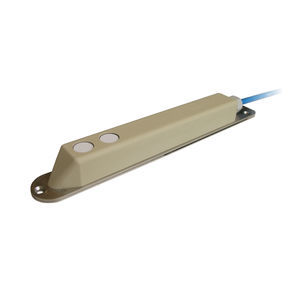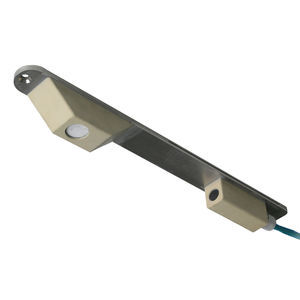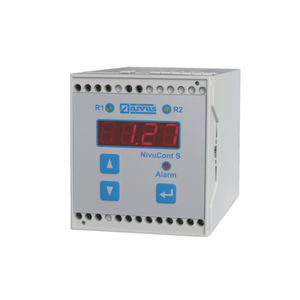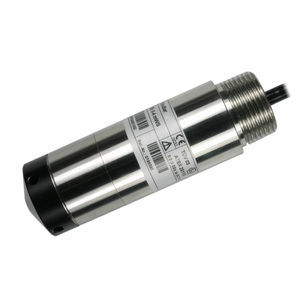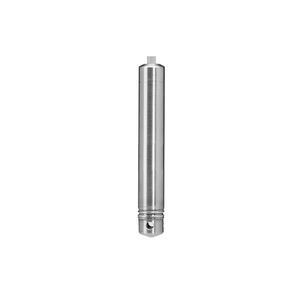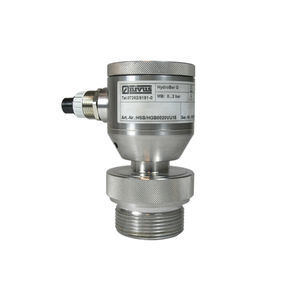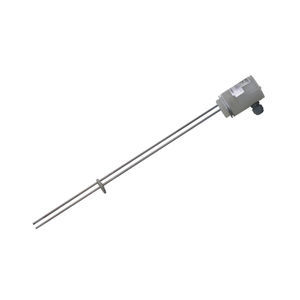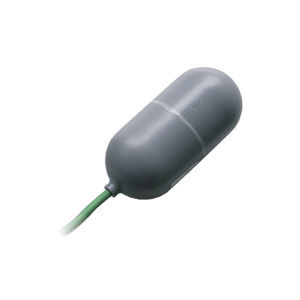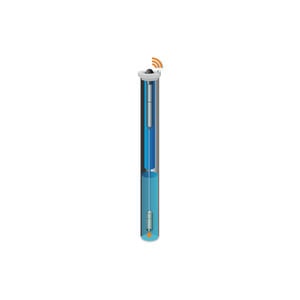
- Products
- Catalogs
- News & Trends
- Exhibitions
Piezoresistive level sensor AquaBar IIfor liquids2-wire4-20 mA

Add to favorites
Compare this product
Characteristics
- Technology
- piezoresistive
- Medium
- for liquids
- Interface
- 4-20 mA, 2-wire
- Applications
- river
- Other characteristics
- stainless steel, submersible, IP68
- Level range
2 m, 4 m, 6 m, 10 m
(6'06" , 13'01" , 19'08" , 32'09" )- Process temperature
Min.: -25 °C
(-13 °F)Max.: 70 °C
(158 °F)
Description
Submersible probe with 4 - 20 mA transmitter for hydrostatic level measurement in clean to slightly polluted liquids. With piezo-resistive stainless steel measurement cell
-Stainless steel diaphragm
-Piezo-resistive pressure sensor
-for clean to slightly polluted liquids.
-2-wire probe
-High accuracy
-Integrated overvoltage protection
-High electrical operating safety
The hydrostatic level probe features a diameter of only 27 mm and hence can be installed in tubes as used mainly for groundwater level measurement and deep well measurements.
The mechanically robust sensor body made of stainless steel (1.4571) and the separating diaphragm (1.4435) are held from the top on a self-supporting cable made of PUR.
The probe can be strained using a straining clamp.
The proven piezo-resistive measurement principle guarantees high long-term stability and operational reliability. Furthermore the reverse polarity protection, the short circuit resistance as well as an integrated overvoltage protection within the sensor body ensure high operating safety.
Utilising the widely used 2-wire technology, the installation costs are very low.
Typical applications for AquaBar II
-Deep wells
-Water levels
-Spring discharge
-Drinking water supply
-Raw water extraction
-Barrages
-River levels
Catalogs
No catalogs are available for this product.
See all of NIVUS GmbH‘s catalogsRelated Searches
- NIVUS flow meter
- NIVUS liquid flow meter
- Level limit switch
- NIVUS level sensor
- Liquid level limit switch
- NIVUS liquid level sensor
- Stainless steel flowmeter
- NIVUS waterproof flow meter
- Industrial flowmeter
- NIVUS analog level sensor
- Protection level level switch
- Float level switch
- NIVUS precision flow meter
- Compact flowmeter
- Water flowmeter
- Level transmitter
- Stainless steel level limit switch
- Liquid level transmitter
- Digital output level probe
- DC flowmeter
*Prices are pre-tax. They exclude delivery charges and customs duties and do not include additional charges for installation or activation options. Prices are indicative only and may vary by country, with changes to the cost of raw materials and exchange rates.








